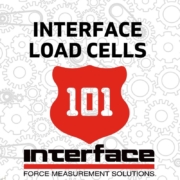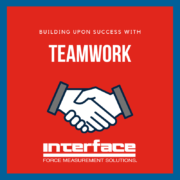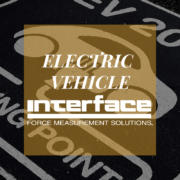Force Sensors in Heavy Machinery Boost Safety and Performance
 Heavy machinery is a pillar in the construction, infrastructure, and natural resource industries. Operating these powerful machines comes with inherent risks and challenges. Ensuring operator safety and maximizing equipment performance are critical concerns.
Heavy machinery is a pillar in the construction, infrastructure, and natural resource industries. Operating these powerful machines comes with inherent risks and challenges. Ensuring operator safety and maximizing equipment performance are critical concerns.
Interface, a leader in force measurement solutions, addresses these challenges by supplying cutting-edge sensor technologies, including our load cells, multi-axis sensors, instrumentation, and torque transducers, to enhance heavy machinery testing, monitoring, and overall reliability.
NEW! Read about the challenges and solutions in our case study: Force Sensor Applications in Heavy Machinery Testing and Monitoring.
Whether heavy equipment is used for resource drilling, offshore lifting equipment, mining, or building roads and bridges, equipment manufacturers and operators must confirm safe and efficient operations, reduce downtime, and extend equipment lifespan.
Incorporating load cells, torque transducers, and other sensor technologies into heavy machinery is rising. Sensor data collected during testing informs engineering design decisions and leads to improving machine performance and reliability.
Heavy Machinery Use Cases for Interface Sensor Technologies
Sensors help prevent overloading, equipment failure, and accidents by providing real-time data on forces, loads, and structural integrity. Accurate measurements enable optimization of machine performance, fuel consumption, and material usage. Continuous monitoring of forces and loads allows for early detection of potential issues, minimizing downtime and repair costs.
Earthmoving Equipment
- Excavators: Load cells measure bucket forces to prevent overloading and ensure optimal digging efficiency. Torque transducers monitor swing motor performance and detect potential issues.
- Bulldozers: Load cells on the blade measure material resistance to optimize pushing power and fuel efficiency.
- Loaders: Load cells in the bucket provide accurate payload measurements to prevent overloading and ensure safe operation.
Lifting and Material Handling Equipment
- Cranes: Load cells on the hook or hoist line measure lifted loads in real-time, ensuring cranes operate within safe limits. Torque transducers on the slewing mechanism help control rotational forces and prevent overturning.
- Forklifts: Load cells on the forks measure load weight to prevent tip-overs and ensure stability during lifting and transport.
Compaction Equipment
- Rollers: Load cells on the drum measure compaction forces to ensure proper soil density and prevent under or over-compaction.
Concrete and Paving Equipment
- Concrete Mixers: Load cells monitor the weight of ingredients for accurate concrete mix proportions.
- Concrete Pumps: Pressure sensors and load cells monitor concrete flow and pressure to prevent blockages and ensure efficient pumping.
Drilling and Piling Equipment
- Drilling Rigs: Load cells and torque transducers measure drilling forces and torque to optimize drilling performance and prevent equipment damage.
- Pile Drivers: Load cells measure impact forces during pile driving to ensure proper pile installation and prevent damage.
Interface’s force sensor technologies transform heavy machinery operations by providing critical real-time data for testing, monitoring, and control. This translates to increased safety, improved efficiency, and reduced downtime across various industries, including energy, agriculture, infrastructure, mining, and more.
Heavy Machinery Applications Using Interface Solutions
- Aerial Lift Overload Control: An aerial lift manufacturer used Interface’s 3-axis Force Load Cell and 920i Programmable Weight Indicator to test its boom lift’s capacity and ensure operator safety. See: Aerial Lift Overload Control App Note
- Quarrying Conveyor Belt Scale: Interface’s SSMF Fatigue-Rated S-Type Load Cells and Wireless Telemetry System were implemented on a conveyor belt to accurately measure and monitor material flow in a quarry. Review: Quarrying Conveyor Belt Scale App Note
- Timber Weighing and Harvesting Scales: Interface SSLP Stainless Steel LowProfile Universal Load Cells with WTS Wireless Transmitter Modules are installed under the weighing bridge. Interface’s Wireless Telemetry System was highly accurate and efficient in the logging truck weighbridge, creating better resource management and conservation. Read Timber Weighing and Harvesting
- Bridge Lifting and Positioning: New bridges on construction sites must be carefully lifted and positioned to their destination. This requires a load-monitoring lift machinery to improve safety and ensure the overall application’s efficiency. Interface’s WTSLP Wireless Stainless Steel Load Pins and Interface’s Wireless Telemetry System were the perfect monitoring systems for lifting and positioning bridges. Check out the Bridge Lifting and Positioning App Note.
- Tunnel Boring Machine (TBM) Performance: The torque of the cutting wheel needs to be monitored and tested to ensure it is working properly during excavation operations. Interface’s T2 Ultra Precision Shaft Style Rotary Torque Transducers are attached to the cutter drives of the cutting wheel used to cut through the material. When connected to the BX8-AS BlueDAQ Series Data Acquisition System the customer can monitor the torque of the cutting wheel mechanism of the TBM when connected to the computer with supplied BlueDAQ software. Interface multi-axis sensors can also monitor the real-time position and orientation of the TBM cutter head. This data controls the machine’s steering and ensures accurate tunnel excavation. Learn more: Tunnel Boring Machine.
Interface continues to set the standard for force measurement solutions in the heavy machinery sector, committing to innovation and focusing on customer needs.









